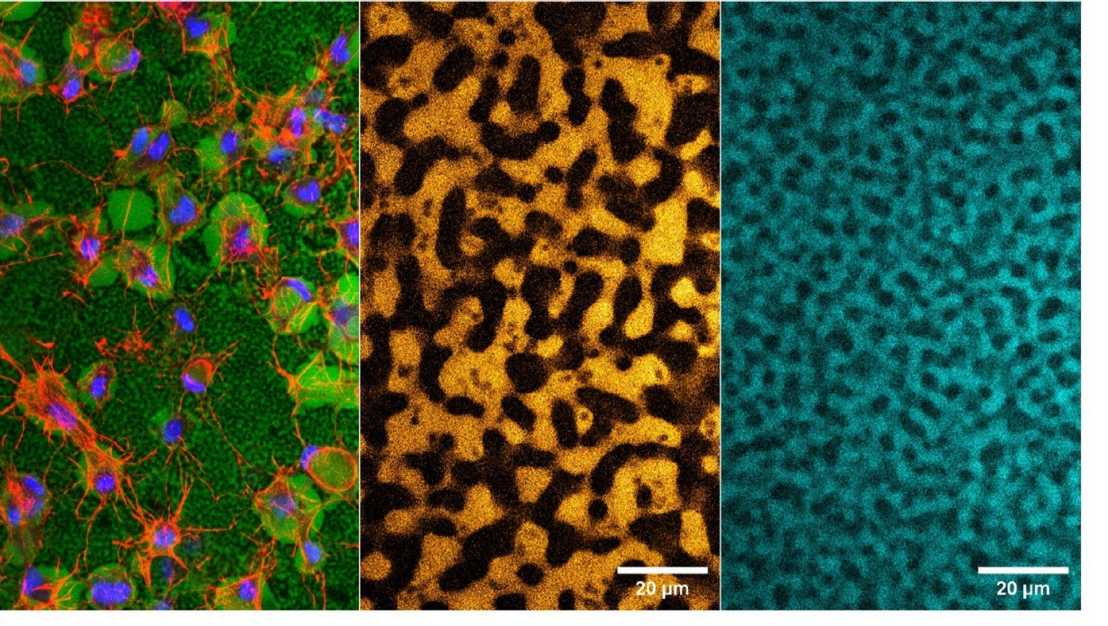Cell-guiding microporous hydrogels by photopolymerization-induced phase separation
An innovative method to produce cell-guiding microporous hydrogels has just been published in Nature Communications by the Qin lab at D-HEST in collaboration with the Michaels lab (within the Bringing Materials to Life Consortium).

The researchers have developed a new class of microporous hydrogels that promise to transform the landscape of 3D cell culture and tissue engineering. This innovative material system, created through a process called photopolymerization-induced phase separation (PIPS), offers unprecedented control over pore formation and provides an ideal environment for guiding cell growth, differentiation, and matrix secretion.
Traditional methods for creating porous hydrogels often lack the ability to control pore formation precisely in the presence of living cells. The newly developed PIPS hydrogels overcome this limitation by leveraging a unique formulation of two ionic polymers, a di-thiol linker, and a water-soluble photoinitiator. Initially miscible, these polymers demix upon photocrosslinking, forming a stable microporous hydrogel with tunable pore sizes ranging from 2 to 40 micrometers. Crucially, this process allows for in situ light-controlled pore formation, even with living cells encapsulated within the material.
Key findings and advantages of the PIPS hydrogels include tunable pore size; high cell viability and spreading; enhanced cell development and organoid formation; synergistic effects for collagen production; integration with volumetric printing.
This novel class of cell-guiding microporous hydrogels holds great potential for advancing biofabrication and functional tissue engineering, with applications ranging from drug screening and disease modeling to regenerative medicine.
Read more in the D-HEST news: https://hest.ethz.ch/en/news/news-and-events/2025/06/light-controlled-pore-formation-for-better-organoid-growth.html
Link to the paper in external page "Nature Communications".